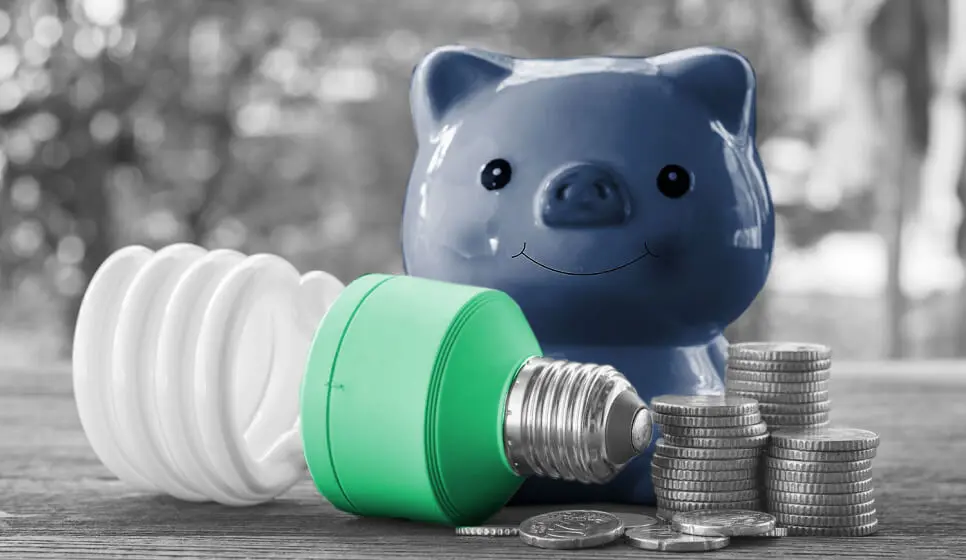As adults pay the bills, it's easy to think that we are alone in trying to save energy.
But that is not the case!
There are several energy saving methods that kids can employ to help out with those pesky energy bills.
And not only will it keep your costs down, it will also help them become more eco-friendly and environmentally conscious.
In addition to that, learning about energy, how it works, its costs, and dangers will help lead to children practising greater energy safety.
Raising energy awareness amongst kids is essential and presents them with lessons that will be useful now and for the rest of their lives.
Here are some ways that you can start instilling the importance of energy saving and energy safety with your kids.
COMPARE & SAVEHow to Teach your Kids to Save Energy
Energy saving
Lights and TV
Kids have a lot going on in their minds. And often, that means they are onto the next thing before they completely finish the last.
This is evident in how children use lights.
Kids will enter a room (or several rooms), turn on the light, finish their business in the rooms and leave all the lights on.
We understand that a lit room is warm and inviting, but it's also wasting energy and running up the bill!
Teach your children about the importance of turning off lights when they are not in use or are not necessary.
Conserving lights can help keep your house cooler, help kids and adults get better sleep at night, and reduce carbon dioxide emissions from power facilities (helping to fight climate change).
And of course, you will see a difference in your energy bill.
And as the TV is a sort of light in itself, the same consequences apply to turning it off when it is not in use.
Adults can help kids use less light energy by:
Opening up the blinds and letting in natural light
If your home is already well lit with natural light, kids might not feel the need to turn on the artificial light.
Get them accustomed to working and playing with natural light. Make sure that they open blinds and curtains before feeling the need to turn on electric lights.
Giving kids incentives for using less light energy each month
Ask your energy-company to send you a monthly statement that highlights your year-over-year usage, if they don't already.
Let your kids know that you will give a prize of some sort if they lead the charge in reducing the bill from what it was in the same month of the previous year.
As kids like games and prizes, this is sure to get them motivated to turn off lights and TVs.
Installing light timers or motion sensors in rooms that kids use frequently
While this idea doesn't necessarily teach kids to use less lights, or hold them accountable for not doing so, it will help you reach your goal of using less light energy. So, if all else fails, you can automate your light energy savings plan.
Refrigerator door
For most homes, the refrigerator is the single most energy-sucking appliance; and the door counts for about 7% of that energy.
With that, leaving the refrigerator door open is a huge waste of energy! Even opening and closing the door several times conserves more energy than leaving the door open for extended periods of time.
And for extended periods of time, think anything longer than 20 seconds.
Kids might have the door open while they look through the refrigerator deciding what they want to eat.
Or, they sometimes leave the refrigerator door open while they eat a small snack, because -- they're still using the refrigerator.
Adults use logic a bit differently than kids, but don't underestimate them.
If you explain to your children that refrigerator use is expensive and misuse of the refrigerator increases our environmental footprint, they are likely to understand.
Explain that when we open the refrigerator door, the cold air escapes. This forces the refrigerator to have to work overtime to get the unit back to its predetermined cool/cold temperature.
In fact, more than 1/3rd of the cool refrigerator air can escape from keeping the door open for even short periods of time.
Furthermore, this could compromise food safety.
After all, you put food in the refrigerator to keep it cold; letting out the cold air works directly against that.
So you risk wasting food due to spoiling -- and wasting energy.
But how much energy can you really waste by keeping the refrigerator door open?
A University of Florida study estimates that carless refrigerator door practices waste between 50
50kWh of energy = 20 dishwasher cycles
100 kWh of energy = 50 washing machine cycles
That's a lot, right!?
So, make sure your kids know what's at risk in keeping the refrigerator open and help them make responsible refrigerator door practices part of their daily routines.
Energy safety
According to the Australia Bureau of Statistics, about 30 children die each year from energy related incidents -- and many more are injured due to these preventable tragedies.
Here are some simple practices to instil in your kids to help keep them safe and help them foster an appreciation for the power and potential dangers of domestic energy.
Keep cords away from water -- even those that are unplugged.
Don't stick anything into an appliance that is powered with electricity.
Never stick objects into electrical outlets.
Remove appliance cords by holding onto the plug and pulling, not by pulling on the wire itself.
Don't plug more than one item into an outlet. Overloading outlets can cause a fire.
This guide is opinion only and should not be taken as financial advice. Check with a financial professional before making any decisions.
^Energy and Water Ombudsman, Ways to save on your bills, accessed 31st March 2022.



